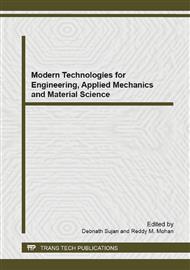p.3
p.8
p.13
p.18
p.23
p.28
p.33
p.41
Properties and Growth Rate of Intermetallic Al-Fe through Hot Dipped Aluminizing
Abstract:
Hot dipped aluminizing is the one of the most famous and effective method of the surface protection. The growth behavior in the intermetallic layer by introducing a different dipping time and various of molten aluminium temperature had been detail investigated. The result showed that the top portion of the coated steel substrate is compose of a thin layer of α-Al2O3, followed by thicker Aluminium pure layer, thinner layer of FeAl3 , and then a much thicker of Fe2Al5 . The inter-metallic layer is ‘thick’ and exhibits a finger-like growth into the steel. The thickness of Al-Fe intermetallic layer on the steel base is increased with the increasing of hot dipping temperature and time. The micro hardness testing result shown that increasing of the aluminizing temperature was increased the hardness of the intermetallic layer.
Info:
Periodical:
Pages:
3-7
Citation:
Online since:
June 2014
Authors:
Keywords:
Price:
Сopyright:
© 2014 Trans Tech Publications Ltd. All Rights Reserved
Share:
Citation:


